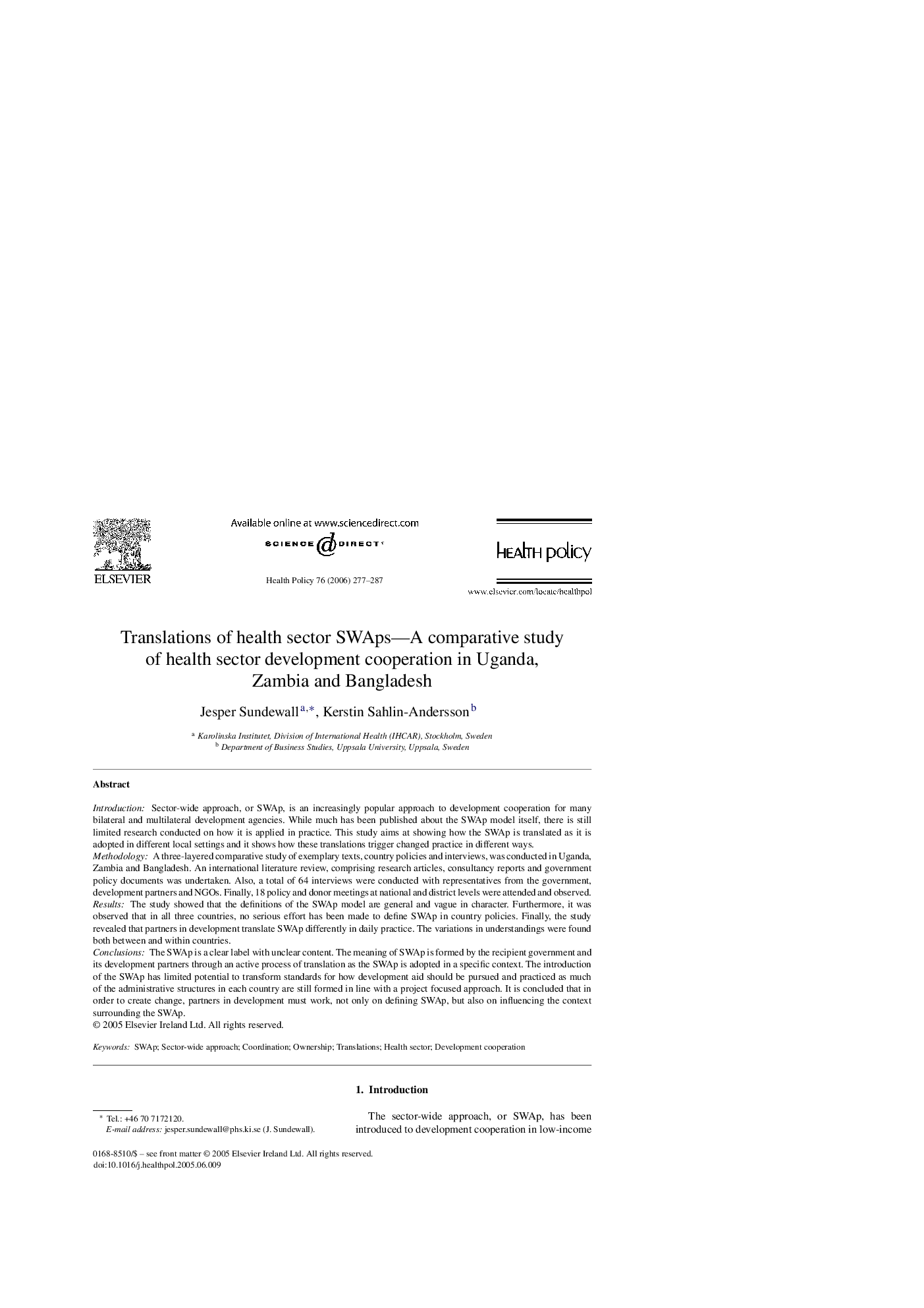| Article ID | Journal | Published Year | Pages | File Type |
|---|---|---|---|---|
| 4199259 | Health Policy | 2006 | 11 Pages |
IntroductionSector-wide approach, or SWAp, is an increasingly popular approach to development cooperation for many bilateral and multilateral development agencies. While much has been published about the SWAp model itself, there is still limited research conducted on how it is applied in practice. This study aims at showing how the SWAp is translated as it is adopted in different local settings and it shows how these translations trigger changed practice in different ways.MethodologyA three-layered comparative study of exemplary texts, country policies and interviews, was conducted in Uganda, Zambia and Bangladesh. An international literature review, comprising research articles, consultancy reports and government policy documents was undertaken. Also, a total of 64 interviews were conducted with representatives from the government, development partners and NGOs. Finally, 18 policy and donor meetings at national and district levels were attended and observed.ResultsThe study showed that the definitions of the SWAp model are general and vague in character. Furthermore, it was observed that in all three countries, no serious effort has been made to define SWAp in country policies. Finally, the study revealed that partners in development translate SWAp differently in daily practice. The variations in understandings were found both between and within countries.ConclusionsThe SWAp is a clear label with unclear content. The meaning of SWAp is formed by the recipient government and its development partners through an active process of translation as the SWAp is adopted in a specific context. The introduction of the SWAp has limited potential to transform standards for how development aid should be pursued and practiced as much of the administrative structures in each country are still formed in line with a project focused approach. It is concluded that in order to create change, partners in development must work, not only on defining SWAp, but also on influencing the context surrounding the SWAp.
